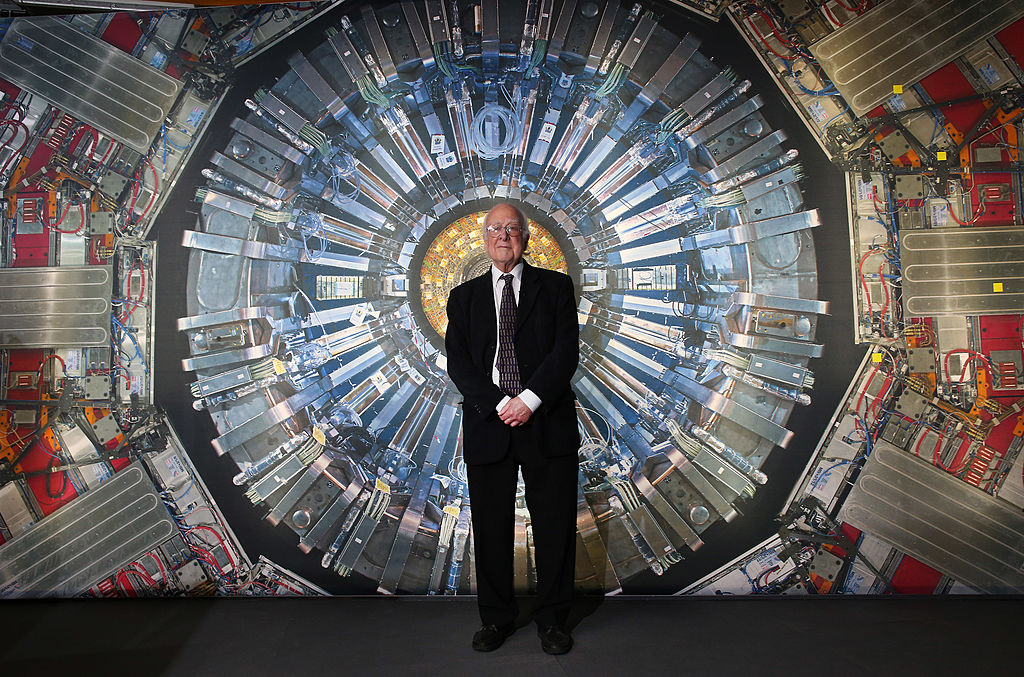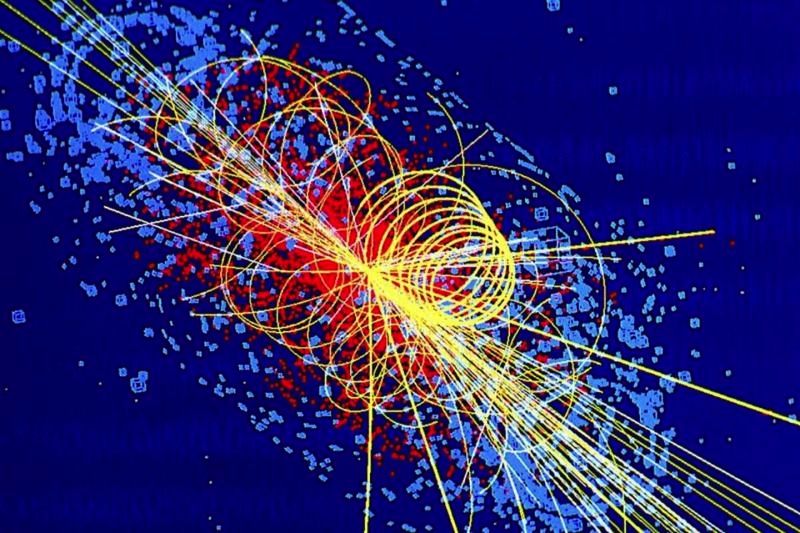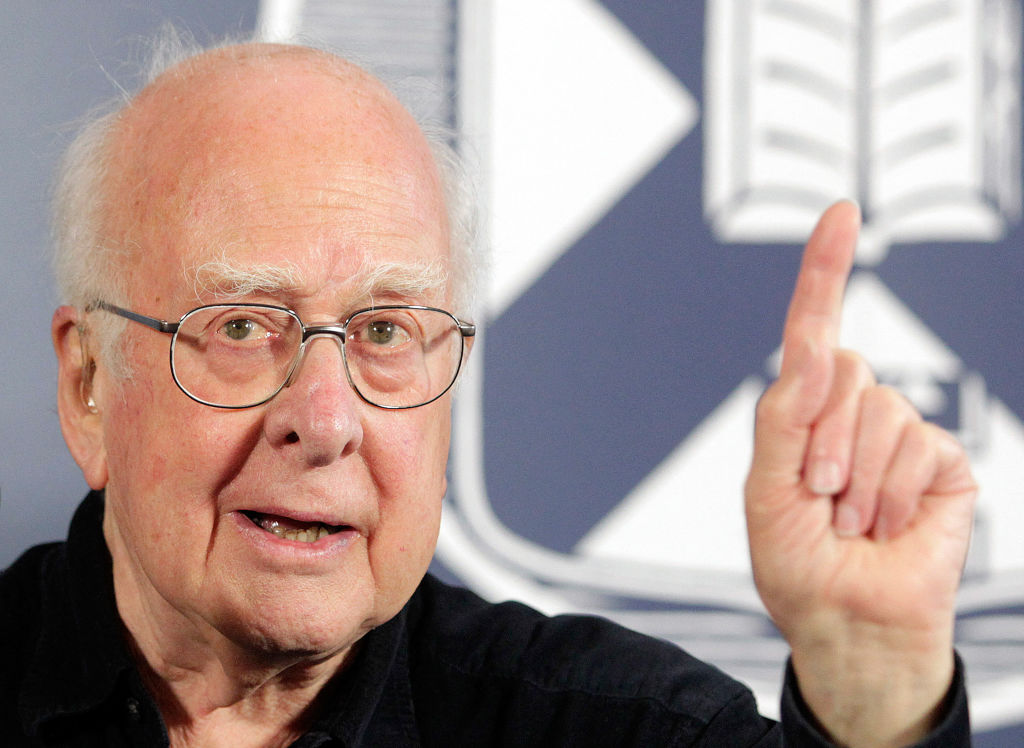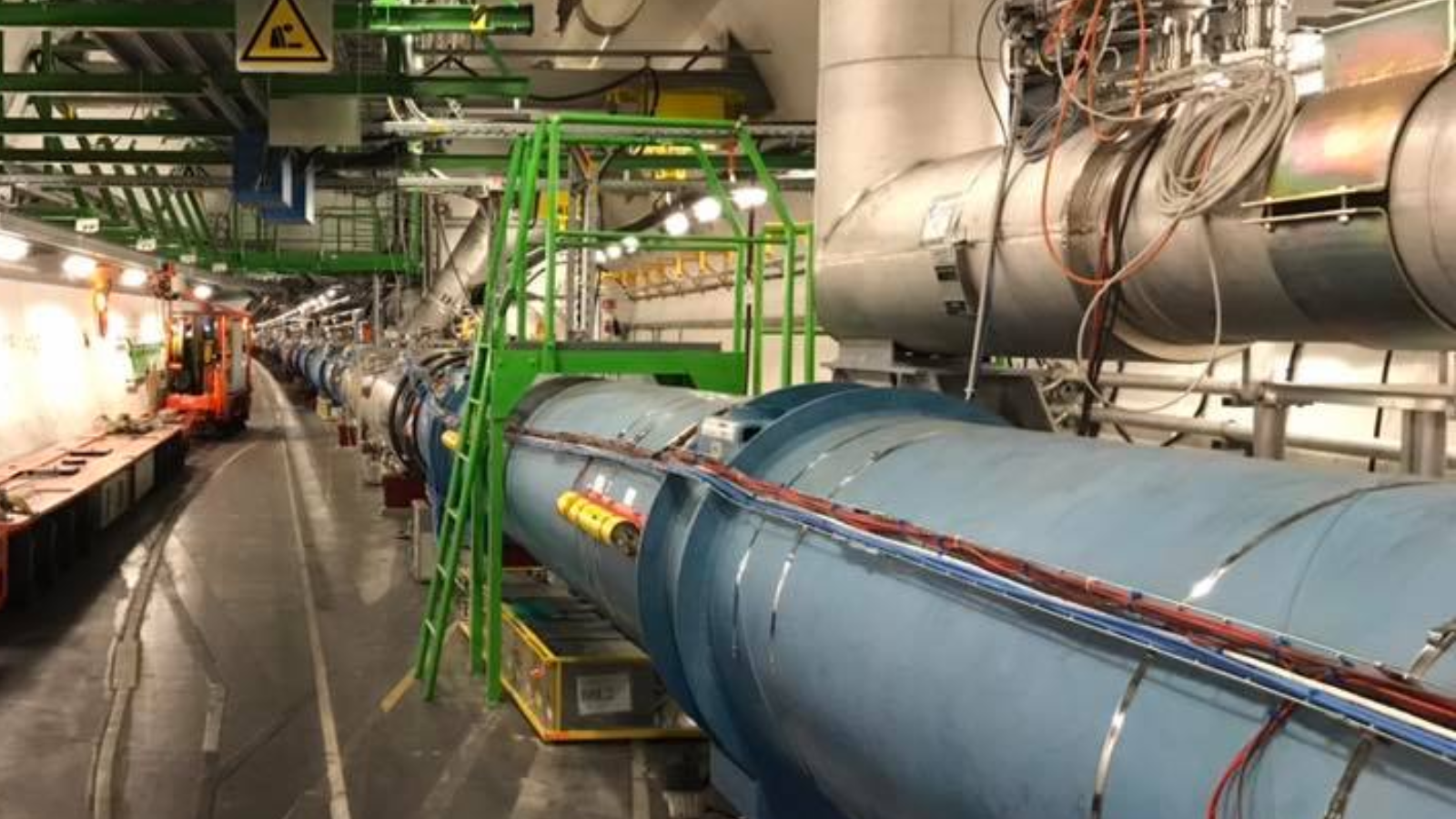Why Peter Higgs leaves a massive legacy in the field of physics
"Higgs' work has and will continue to shape the field for many years to come and is possibly the largest success story of 21st-century theoretical physics."

On April 8, 2024, British theoretical physicist Peter Ware Higgs passed away at the age of 94. It was almost 12 years ago, on July 4, 2012, in a fairly inauspicious lecture hall located in Geneva, Switzerland, when Higgs became an iconic figure in modern science.
That was the day it was announced that collisions between particles at the Large Hadron Collider (LHC) facility — arguably the most ambitious and audacious science experiment ever — revealed the existence of the Higgs boson.
The discovery of the Higgs boson, named for Higgs himself, has been vital for the field of particle physics. It was the last occupant of the particle zoo that's needed to complete what's known as the "Standard Model of particle physics," the best description we have of the universe on the smallest of scales.
For Higgs, born in Newcastle upon Tyne in the U.K. to a Scottish mother and an English father on May 29, 1929, the moment was met with an outflow of emotion. This was unsurprising, given that this announcement represented the culmination of five decades of his work, and validated a theory that he refused to give up on.
Related: Higgs boson: The 'God Particle' explained
Beyond the culmination of the Standard Model, the discovery of the Higgs boson signaled the need for physicists to begin exploring physics beyond parameters they were used to, thus setting the course for physics for decades to come.
"Peter Higgs' contribution to modern physics is absolutely outstanding," Luz Ángela García Peñaloza, a cosmologist at Universidad ECCI in Colombia told Space.com. "His work on quantum field theory led to a theory for which, later on, he would be awarded the Nobel Prize in Physics and explains the mechanism that provides fundamental particles with mass.
Get the Space.com Newsletter
Breaking space news, the latest updates on rocket launches, skywatching events and more!
"He was way ahead of his time."
50 years of searching for a single particle
The 20th century marked the birth of particle physics as a discipline of its own and sparked huge strides in the nascent field. Yet, as that century drew to a close and the particle zoo grew in terms of its occupants, physicists started to wonder why some particles had mass and others, particularly particles of light called "photons," didn't.
By 1964, physicists studying the weak nuclear force, which is one of four fundamental forces of nature that determines the atomic decay of elements by transforming protons to neutrons, concluded something surprising.
The carriers of this force, W and Z bosons, should be massless — yet, the fact that the weak force appeared strong over short distances and weak over long distances meant they couldn't be massless. If they were, it would risk breaking an important rule of physics called symmetry, which ensures the laws of nature are the same however they are viewed. According to CERN, you can think of the symmetry problem as analogous to a pencil standing on its tip — a symmetrical system — suddenly tipping to point in a preferred direction, thus destroying its symmetry.
In 1964, Peter Higgs, François Englert and Robert Brout proposed a solution. There might be something, they said, that "tricks" nature into spontaneously breaking symmetry. So, what could that something be?

Higgs and colleagues thought that, when the universe was born, it might have been filled with what's called "the Higgs field" in a symmetrical, but unstable, state like that precariously balanced pencil.
In just fractions of a second, that field, the "Higgs field," would find a stable configuration, but in doing so, would break its symmetry. This, in turn, gives rise to something called "the Brout-Englert-Higgs mechanism," which grants mass to the W and Z bosons and solves the discrepancy.
While this would have been a vital theory in its own right, it was later discovered the Higgs field would grant mass to many other fundamental particles, and that the strength of these interactions would give different particles different masses. This meant that, if confirmed, the theory would have major ramifications for science.
The next step was getting that confirmation in the shape of the discovery of a particle that would act as a "messenger" for the Higgs field: The Higgs boson.
This search would warrant the construction of the LHC. At 17 miles (27 kilometers) long, it is the largest particle accelerator ever built at a cost of around $4.75 billion USD.
"Higgs' work is a major reason why the LHC was constructed in the first place," CERN experimental high energy physicist Nima Zardoshti told Space.com. "His predictions provided some of the crucial theoretical guidance as to the energy reach required by the LHC in order to potentially find new physics."

In 2012, that expense and ten years of effort by an international collaboration of 23 CERN member states paid off.
A cascade of particles resulting from the decay of Higgs boson particles was created, and was captured by both the LHC ATLAS detector and the Compact Muon Solenoid (CMS) detector. This was the necessary confirmation for the Higgs field theory.
Higgs and Englert would share the 2013 Nobel Prize in Physics for the breakthrough.
"In professor Peter Higgs, physics has lost a gentle giant of the field," Suzie Sheehy, an associate professor of physics at the University of Melbourne and visiting lecturer at the University of Oxford, said in a press release. "Higgs’ work is rightly celebrated as an incredible feat of curiosity-driven research: his proposal in 1964 about the potential existence of the Higgs field and related particle, the Higgs boson, seemed at the time to be an obscure idea … just one of many theoretical mechanisms put forward to explain unknowns in fundamental physics.
"It then took almost 50 years — and around 13,000 other scientists and engineers — to build the experiments (ATLAS and CMS) that enabled the Higgs boson to be discovered in 2012 at the Large Hadron Collider."
Sheehy added that less well known is how curiosity-driven research has had enormous practical influence in our lives, producing unimaginable spin-offs like the World Wide Web and better cancer treatment technologies.
"Higgs' story represents an important lesson for us all about how science works: he would have been the first person to point out that science does not happen on the timescales of a few years," Sheehy said. "We need to ensure long-term support for curiosity-driven research if we are to make the kinds of breakthroughs in our understanding of the universe that Peter Higgs is celebrated for. "

"Even though we have now discovered it, measuring with precision the properties of the Higgs boson still remains one of the most promising ways of probing physics beyond the Standard Model," Zardoshti added. "Higgs' work has and will continue to shape the field for many years to come and is possibly the largest success story of 21st-century theoretical physics."
As a science reporter, Higgs' legacy has personally touched my life as well.
On July 4, 2019, I was invited to visit the LHC during its shutdown and upgrades, see its ALICE detector up close and explore miles of tunnels under France and Switzerland where the collider is housed.
Before that, I, along with several other journalists, attended an orientation session at CERN in Geneva. Many of us realized that day marked exactly seven years since the announcement of the discovery of the Higgs boson, and we were sat in the very hall where Peter Higgs once shed tears as he heard confirmation his theory had reached fruition. I was able to quickly snap a very poor image of that hall. I made sure to take this image from the perspective of the very seats where Higgs sat, to see what he would have seen on that momentous day.

The moment gave me goosebumps. It still does.
I'd written many times about how the discovery of the Higgs boson was vital to our understanding of physics, and I would go on to do so many more times. Yet, in that lecture hall, I felt a connection with that moment, and I know many who have sat there since have felt that connection, too.
Imagine an unquantifiable field stretching across time and space to give metaphorical weight to a single, vital moment that changed everything — a field that can connect all who learn about that moment itself, to each other.
I think Peter Higgs may have liked that idea.
Join our Space Forums to keep talking space on the latest missions, night sky and more! And if you have a news tip, correction or comment, let us know at: community@space.com.

Robert Lea is a science journalist in the U.K. whose articles have been published in Physics World, New Scientist, Astronomy Magazine, All About Space, Newsweek and ZME Science. He also writes about science communication for Elsevier and the European Journal of Physics. Rob holds a bachelor of science degree in physics and astronomy from the U.K.’s Open University. Follow him on Twitter @sciencef1rst.
-
Hardcrunchyscience Reply
Excellent, excellent article. A must-read, boys and girls. He is also known for his modesty, integrity and accurate knowledge of physics, things lacking in a lot of modern physics thinkers . . . .Admin said:On April 8, 2024, Peter Higgs passed away. Pioneering the discovery of the Higgs boson, the mark the theoretical physicist has left on physics is immense.
Why Peter Higgs leaves a massive legacy in the field of physics : Read more -
vilhelmkb RIP Higgs, besides being an extraordinary physicist, I believe his name was also used in several Sci-Fi movies - including Alien.Reply -
orsobubu I don't believe this apologetic article, it is well known that the standard model, to avoid a total collapse, should require many other "higgs bosons", and absolutely nothing was discovered about them, neither other interesting facts in the last 50 years in physics, so the possible outcome is that the model is fake, and it seems that the 95% unknown matter composing the universe is a proofReply









